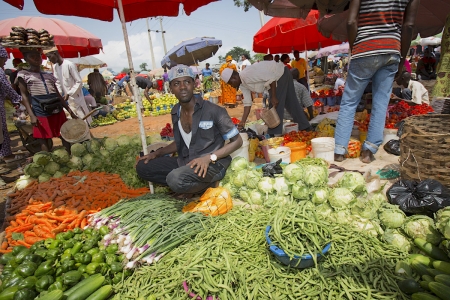This proposal is predicated on the opportunity to derive great benefits from capitalising on little used water-related ecosystem services in the polders. The polders are surrounded by large tidal rivers (2-3 m diurnal fluctuation) which gradually become saline as the dry season progress due to inward movement of the sea. The fundamental causes of the low productivity in the polders of the coastal zone are waterlogging during the rainy season, and lack of fresh water and salinisation during the dry season. The causes of water logging are: (i) high rainfall, (ii) lands of different elevation, meaning that lower lands are inundated more deeply, and (iii) poor condition and/or improper management of the sluice gates, meaning that water flows into the polders at high tide. The lack of hydrological separation of lower and higher lands is also an important cause of water management conflict; for example, bringing enough water in to flood the higher lands results in deep inundation of lower lands, to the degree that water is too high in the lower lands, even for cultivation of the commonly grown tall, traditional rice varieties. At the end of the rice season, some farmers may wish to drain their lands for timely establishment of dry season crops, while other farmers want to continue to bring water in to finish of their late maturing crops. As a result, agricultural land productivity in the polders is very low, with most farmers growing a single, low yielding rainy season rice crop, followed by a very low yielding legume or sesame crop (which is often severely damaged or destroyed by pre-monsoon rains due to late establishment). Water management in the polders can be greatly improved by (i) draining excess water (after heavy rainfall) by systematically opening the sluice gates at low tide (when the river level is lower than the land level), and (ii) closing them when the river level rises above land level. Further benefits can be derived by separation of lands of higher and lower elevation, taking advantage of existing infrastructure (village and government roads), with strategic construction of small levees to complete the separation. This will create land units of roughly similar elevation, providing the basis of community water management units (WMUs). Installation of a drainage outlet into the adjacent khal and strategically placed small drains within the WMU will enable drainage of the lands as needed, in synchrony with operation of the sluice gate in the polder embankment at the head of the khal. Prior to rice harvest, the fields can be drained to enable rapid soil drying and “early” (timely) establishment of dry season crops. Drainage during the rainy season would also allow the establishment of early maturity high yielding varieties of rice. This would further advance the possible time of establishment of dry season crops, and thus introduce the possibility of diversifying to high yielding/high value crops such as sunflower, maize and wheat. During the dry season, the khals provide the opportunity to convey fresh water for irrigation of dry season crops by bringing in river water at high tide while the water is still fresh. Just before the river water becomes too saline for irrigation, the khals can be filled and used as reservoirs for irrigation to finish off the dry season crops. At this stage the sluice gates would be kept closed to prevent the saline river water from entering the khal. Improving water management in these ways would greatly increase the resilience of the agricultural production systems against pre-monsoon rains and cyclones (which are most frequent in May and November). Early drainage after rice enables early establishment and harvest of dry season crops, which greatly reduces the likelihood of damage from rains and cyclones in May, as the crops will have already been harvested. Use of earlier maturity rice varieties in the rainy season will reduce the risk of damage by cyclones in November, as grain filling will be complete by early November.
menu
















